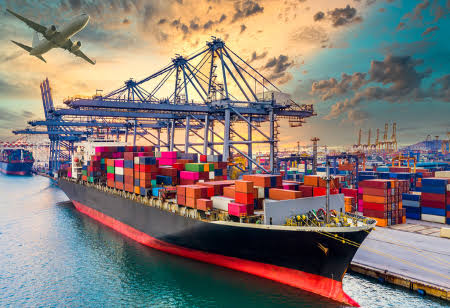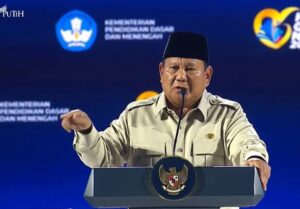Continuity in trade surplus of Indonesia

July 2023 was the 39th straight month that Indonesia has booked a trade surplus. The long run of monthly trade surplus has helped to stabilize the Indonesian currency Rupiah.
July 2023 trade balance was for a surplus of $2.53 billion, down from $3.46 billion a month prior.
“A still healthy run-rate for the trade surplus to date, bodes well for external balances, by extension being supportive of the Indonesian Rupiah, at a time when global uncertainties are weighing on the currency,” Radhika Rao, an economist with DBS Bank said.
According to Statistics Indonesia (BPS), Indonesia’s exports from January to June 2023 reached USD 128.66 billion. However, it represents a decrease of 8.86% compared to the same period in 2022.
Global economic conditions remain precarious and global growth is expected to slow down this year to 2.1% (down from 3.1% in 2022). But in this challenging global environment, Indonesia’s economy remains relatively stable and its economic growth is projected to normalise in between 4.9% to 5.1% this year (down from 5.3% in 2022) as the commodity boom wanes and domestic demand normalises following the post-pandemic jump last year. Inflation is expected to average 4.2% in 2023 as commodity prices ease and monetary policy tightens.
The robustness of Indonesia’s manufacturing sector has seen the sector remain the largest industry contributor to Indonesia’s gross domestic product (GDP), making up 18.3% (2022) of total GDP, driven by strong domestic consumption. The leading manufacturing sub-sectors include basic metal, machinery, leather and footwear, textiles, transportation tools, electronics, pulp and paper, and food & beverage. These sub-sectors support other down-stream industries such as energy, information technology, communication, transportation, and logistics.
In July 2023, Indonesia reacquired its status as an ‘upper-middle-income country’, according to the World Bank, putting it back on track to pursue its high-income status goal – an ambition for 2045 and the centenary of independence.
Whilst Indonesian President Joko Widodo has expressed gratitude for the recovery of Indonesia’s economic growth for the past six quarters (supported by commodity windfalls and domestic consumption), he stated that the situation ahead would not be easy due to the unstable global environment and ongoing geopolitical tensions affecting economic growth and weakening trade activity.
From a global trade perspective, Indonesia has been performing strongly and has been consistently posting trade surpluses since 2020.
According to the PwC Indonesia Economic Report, we could expect this trend to continue, considering Indonesia’s primary trading partners will only experience a mild slowdown, and the prices of Indonesia’s top export commodities (i.e. coal, palm oil, and nickel products) remain strong.
The top five Indonesian export destinations, along with their growth projections in 2023, are China (+4.7%), USA (+0.2%), Japan (+1.2%), India (+5.4%) and Malaysia (+4.4%)
In December 2022, Indonesian President Joko Widodo provided direction to Ministries to maintain national economic resilience in facing various challenges ahead, including:
- Finding synergies between fiscal and monetary policy to support the ‘real sector’ (part of the economy that produces tangible goods and services).
- Maintaining people’s purchasing power;
increasing exports. - Increasing investment.
- Expanding downstream (in priority sectors such as agro-industry, mineral and mining, as well as oil, gas and coal) and green energy.
Trade Balance in 2022
The value of Indonesia’s trade balance in 2022 scored the highest record with a surplus of US$54.46 billion—the biggest surplus so far.
“I am grateful that the 2022 trade balance scored a surplus of US$54.46 billion, the biggest record so far,” said Minister of Trade Zulkifli Hasan, according to the website of the Indonesian Ministry of Trade, in January 2022.
Zulkifli added that this surplus was supported by export performance that broke the record. The 2022 export value was recorded at Rp291.98 billion, increased by 26.07 percent compared to that in the same period in the previous year i.e. 2021.
Future Economic Outlook
Despite some economic pressures, Indonesia’s exports are projected to remain robust, and therefore, Indonesia’s trade balance will still potentially achieve surpluses in the future.
Economic experts estimate that the trade balance will continue to achieve an average monthly surplus ranging from USD 2 billion to USD 3 billion shortly. However, this surplus is narrower than the previous year’s average of USD 4 billion to USD 6 billion.
The forthcoming export and import performance will be driven by various commodity types, including mineral commodities that are beginning to show signs of recovery.
Furthermore, Indonesia’s export performance will also be influenced by government efforts to promote the downstream of natural resources (SDA) and bare minerals, which are expected to yield positive outcomes for enhancing export value-added.


